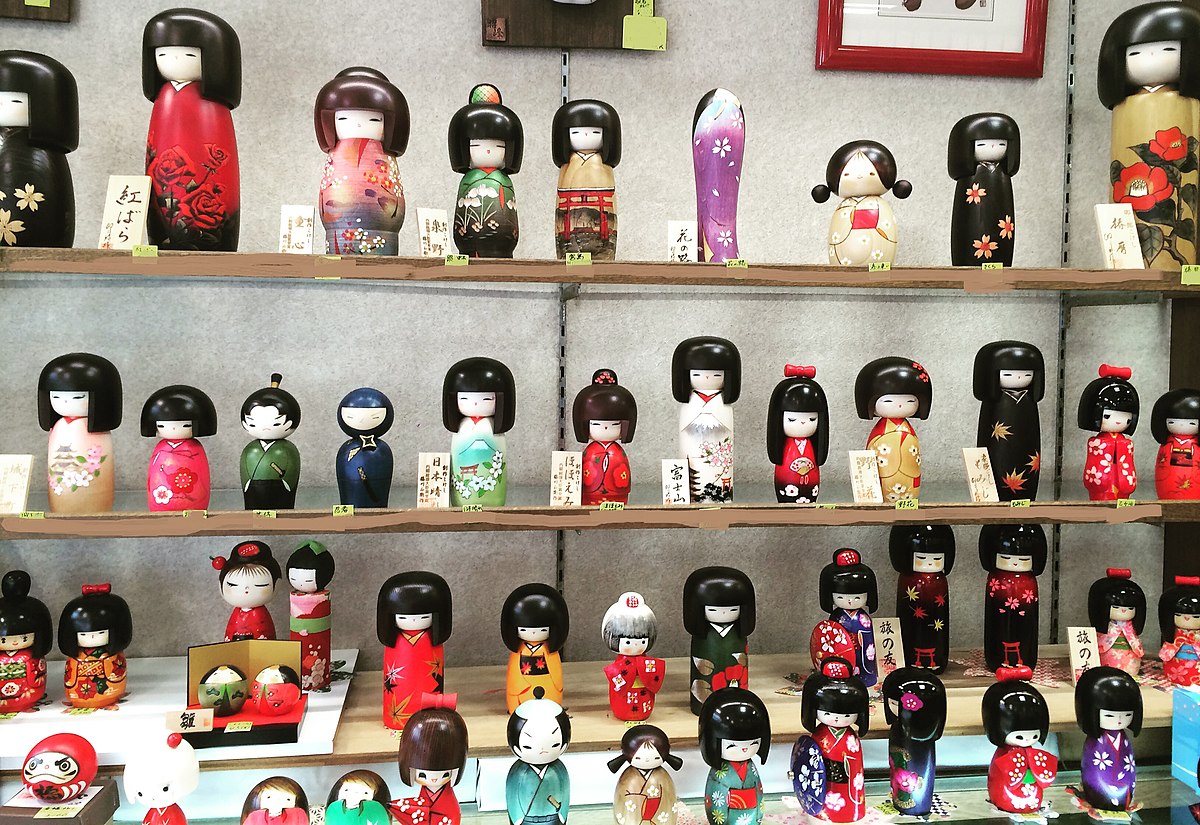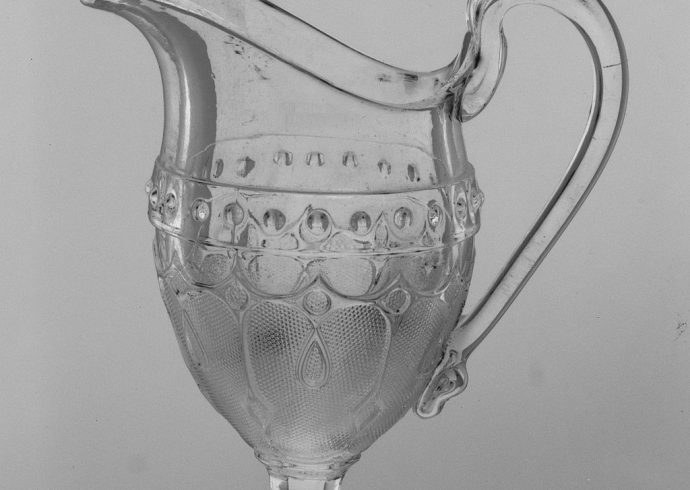
Throughout the centuries, children’s toys made of wood have long been admirable pieces for antiques collectors. One of the more exotic wood toys which has long been of interest to the western world is the Japanese kokeshi.
In the Japanese language, the word “kokeshi” means “doll carved from a tree”. Japanese craftsmen often cut the wood from the tree before setting it aside to dry for one year prior to shaping it into its simple doll shape. Kokeshi were most likely a secondary product from leftover wood which was used in the making of wood bowls in the northeast region of Tohoku in Sendai City, Miyagi Prefecture on the island of Honshu.
As a child’s toy, kokeshi was most likely the first type of wood doll that Japanese girls played with in Tohoku. The first kokeshi were made during the Edo period in the late seventeenth century. According to an article from Pittsburgh Post-Gazette dated May 4, 2011, the Edo Period was a time in Japan’s history where many folk crafts flourished, and the manufacture of kokeshi, along with other dolls elsewhere in Japan, gave the name Japanese Doll Renaissance to this era.
Kokeshi typically did not have separate wood limbs attached to the main body as a traditional doll made in the west, but in many cases arms were painted on the wood, sometimes including a pair of feet peeking out from underneath the brightly colored painted kimono. The actual shape of kokeshi range from columnar to like a bowling pin but with the head being slightly larger than the body, or even as thin as a dowel with an oversized head. Considering the unusual shape of the kokeshi body, it is believed that the doll shape was originally intended for Japanese infants to learn to grasp with their tiny hands, as a tool of coordination. As with other Japanese dolls such as the daruma, hina, kimekomi, and ichimatsu, kokeshi also falls under the umbrella word of ningyo, which in Japanese mean “human form”.
The creation of kokeshi was traditionally passed down to family members, with both men and women learning the skills of creating a single kokeshi from start to finish. As kokeshi were each individually made by hand, they would be carved then sanded to a smooth surface. Historically, the types of woods used in the making of kokeshi are: dogwood, camellia, magnolia, Japanese maple or cherry. As a folk-craft, the kokeshi doll could be painted a wide range of colors and designs upon its surface. The paints used on the traditional kokeshi were water based, which meant they had to be kept inside in a dry, dark storage area where the colors could be preserved and not fade from exposure to sunlight. Popular colors used in painting traditional kokeshi are red, green, purple and yellow.
Kokeshi range in height from 2″ to 12″, with elaborate decorations such as the popular chrysanthemum, plum or peach blossom, cherry blossom, or peony. There are two types of kokeshi: traditional and creative. Creative kokeshi are more modern and are created by more than one craftsman. In this case the doll is first sketched out in a specific design on paper, then sent to the manufacturers to cut out the wood pieces and prepare them for painting. Creative kokeshi also have blue or aqua in the decoration of the doll. It is worth noting that the creative kokeshi were intended as souvenirs for the westerner to purchase and appreciate, their origin dating back to post-World War 2, according to an article from Pacific Daily News, Guam, dated September 14, 2000. Creative kokeshi are often one-of-a-kind and cost more than a traditional one. Traditional kokeshi are often varnished and retain the original wood color for parts of the doll, such as the face or the neckline. The hair was often painted directly onto the head for traditional kokeshi. Creative kokeshi have the hair shaped like a helmet from a separate piece of wood, painted black and attached to the doll’s head. This distinct style of hair is very striking against the doll’s face which is often painted white. Moreover, creative kokeshi, like the traditional kokeshi, included male figures but with the faces painted white and the hair directly painted onto the head, frequently in a kabuki style. Perhaps this is not too surprising, since kabuki, a form of Japanese theatre, also arose during the Edo period when the first kokeshi were being created.
According to an article in The LaCrosse Tribune, Wisconsin dated June 28, 1953, one popular kokeshi legend surrounds a pair of kokeshi of one man and one woman. If a woman has a pair of kokeshi and gives the object of her love the girl doll while she keeps the boy doll, it is a gift of intimate love that will last forever if the two kokeshi are equally treasured. By the early 1960’s, kokeshi became popular as a Japanese collectors item in the United States.
Kokeshi has also been emulated in style and form by American manufacturers, often in a non-wood substance such as plastic. In 1970 when Avon released its Small World collection of shampoo bottles resembling different nationalities of the doll shapes – one being Japan – each one evokes the kokeshi style with the distinct body and head minus the limbs.
Today there are still skilled craftsmen in the northern Tohoku region of Japan who create kokeshi from start to finish. The region is also home to many kokeshi museums, which shows that Japan deeply cares about preserving traditional crafts.
Image Credit: Kimivanil, CC BY-SA 4.0, via Wikimedia Commons.


